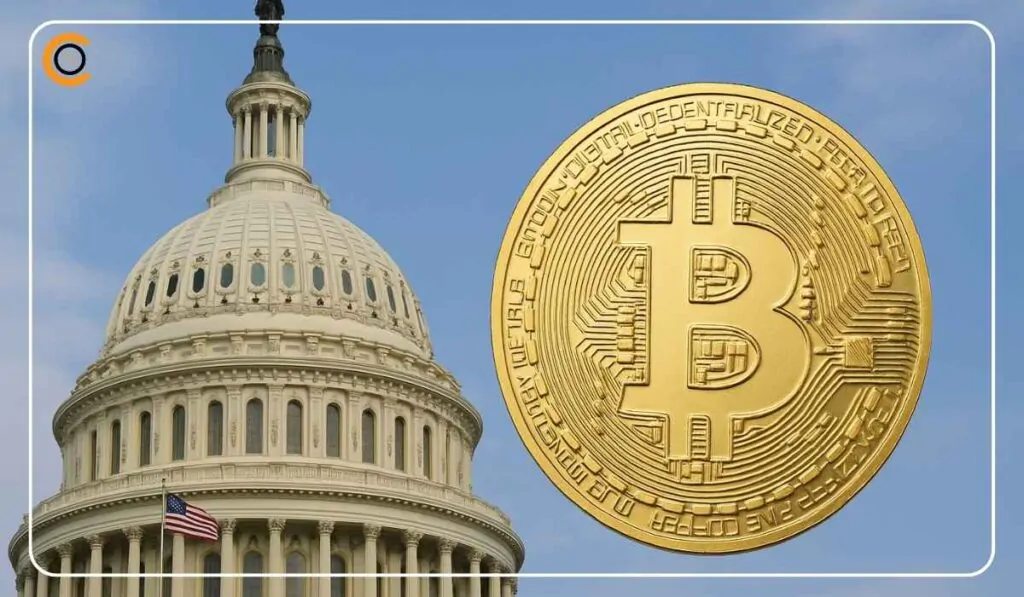- The GENIUS Act, passed by the Senate with significant bipartisan support, sets the first clear federal regulations for U.S.-dollar stablecoins.
- Stablecoin issuers must maintain full reserves backed by cash or short-term U.S. Treasuries, provide monthly disclosures, and adhere to rigorous anti-money laundering rules.
- The Act now moves to the House, where it faces further negotiation and reconciliation with existing proposals like the STABLE Act, potentially impacting the final legislative outcome.
In a notable development for the cryptocurrency industry, the U.S. Senate has passed the GENIUS Act to regulate stablecoins, creating the first federal guidelines for dollar-pegged digital tokens. The bipartisan bill passed with a 68–30 vote on June 17, 2025, and now heads to the House of Representatives for consideration.
The GENIUS Act establishes the first federal framework for regulating stablecoins, a category of cryptocurrencies typically pegged to the U.S. dollar. With their growing role in digital finance, stablecoins have become central to over 60% of crypto transactions, most of which are tied to major issuers like Circle and Tether.
Key Provisions of the GENIUS Act
The GENIUS Act introduces stringent requirements for stablecoin issuers operating in the U.S. market. Issuers must maintain reserves fully backed by cash or short-term U.S. Treasury bills. Additionally, monthly public disclosures of reserve compositions will be mandatory, alongside strict anti-money laundering compliance measures.
The Department of Treasury gains significant oversight authority under this bill, managing the approval process and supervision of stablecoin issuers. This move opens the pathway for banks, fintech companies, and major retail corporations such as Amazon and Walmart, which reportedly are exploring stablecoin-based payment solutions.
What the GENIUS Act Aims to Do
As currently written, the bill imposes strict requirements on stablecoin issuers operating in the U.S. These include:
- Full reserve backing, ensuring each stablecoin is matched 1:1 with cash or short-term U.S. Treasury assets
- Mandatory monthly audits and public reserve disclosures
- Anti-money laundering (AML) compliance
- Regulatory supervision likely to include new capital adequacy rules
The legislation grants broad authority to the U.S. Department of the Treasury to oversee stablecoin issuers, a departure from the House’s approach, which proposes shared responsibility among the Federal Reserve, the Office of the Comptroller of the Currency, and other agencies.
The bill is designed to provide a clear legal path for a wider group of institutions, including banks, fintech companies, and retailers, to issue or integrate stablecoins into their payment systems.
Political Reactions and Industry Response
The GENIUS Act has been celebrated by several crypto industry groups. Ji Kim, Acting CEO of the Crypto Council for Innovation, called the Senate vote a “historic step forward.” Amanda Tuminelli, Executive Director of the DeFi Education Fund, stated that the bill brings the U.S. closer to responsible digital asset regulation.
Senator Bill Hagerty (R-TN), one of the bill’s sponsors, emphasized the potential benefits for stablecoin adoption, citing the legislation’s emphasis on dollar-pegged backing as a source of market confidence.
However, the bill has not received universal support. Senator Elizabeth Warren and others voiced concern over its lack of provisions to prevent tech giants and foreign entities from exploiting regulatory gaps. One point of contention was the rejection of amendments barring elected officials from profiting from crypto, especially in light of President Donald Trump’s recent digital asset ventures.
Despite these disagreements, many lawmakers on both sides of the aisle agreed that the absence of regulation is no longer an option. As Senator Kirsten Gillibrand (D-NY) put it, “The GENIUS Act will protect consumers, enable responsible innovation, and safeguard the dominance of the U.S. dollar”.
Concerns Around Oversight and Potential Conflicts
Several Democrats pushed back against provisions they viewed as inadequate for preventing potential misuse. In particular, concerns were raised about President Trump’s personal crypto involvement, including reports that he earned $57 million from token sales in 2024 and maintains ownership in World Liberty Financial, a crypto company managed by his family.
Senator Jeff Merkley (D-OR) criticized the failure to adopt ethics restrictions, describing the bill as “rubberstamping Trump’s crypto corruption”. Additional scrutiny came from the Conference of State Bank Supervisors, which argued that the bill might enable unregulated financial services to expand too broadly without proper oversight from state-level regulators.
What’s Next for the GENIUS Act?
Though the bill’s passage in the Senate marks a significant milestone, its future remains uncertain. The House has its own stablecoin legislation, the STABLE Act, which differs notably in how regulatory authority is assigned. Reconciling the two bills could prove difficult and may require further negotiations.
Observers also note the Act’s close ties to the broader Digital Asset Market Clarity Act, a sweeping legislative effort aimed at clarifying the legal status of the wider crypto ecosystem. Industry stakeholders and lawmakers alike view both bills as essential to crafting a complete regulatory structure.
Time is now a factor. The White House, through advisers like Bo Hines, has signaled that it wants a stablecoin bill passed before the end of summer. But finalization will depend on whether the House can align its priorities with those of the Senate.
A Measured Step in a Rapidly Evolving Sector
The passage of the GENIUS Act by the U.S. Senate represents the clearest signal yet that Washington is prepared to establish meaningful oversight of the stablecoin market. While debate continues over the bill’s adequacy in addressing ethical and security concerns, it is undeniably a pivotal step in formalizing digital dollar infrastructure.
As the bill awaits action in the House, the crypto industry, and its critics, will be watching closely. For now, the U.S. moves one step closer to a stablecoin regulatory regime that reflects both the promise and the risks of this emerging technology.






